The crew of the SS AMERICAN LEADER were at the Bicycle Camp but were never integrated into the Tharp contingent in that they arrived after that group had departed. Their story as POWs is similar:
On 7 SEP 1942, American Leader was in Cape Town where she received orders from the British Admiralty. She was sent westward – unescorted – toward the Straits of Magellan to the Pacific. At that time the German Raider Michel had been operating in the South Atlantic with impunity. On that dark night OF SEP 10th the American Leader became her 10th victim. Following the sinking, the Michel returned to the scene. From three liferafts, 47 survivors were picked up and taken prisoner. Eleven men were lost.

On 7 OCT 1942 the 72 American and British seamen on board Michel were transferred to a Kriegsmarine resupply ship Uckermark and were handed over to the Japanese at Tandjong Priok on 6 NOV 1942. They first went to the Bicycle Camp, and later some were sent to Kampong Makassar.
In 1944, eighteen American Leader survivors were among 1,000 prisoners selected be sent to Japan. On 27 JUN 1944 their transport Tamahoko Maru was torpedoed by the USS Tang. The ship sank in just two minutes and only five of the American Leader crew members on board survived.
At about the same time, 15 other crew members were sent to Sumatra via Singapore to work on the Pakan Baroe railway where more died. On SEP 15, the ancient coal-burning Junyo Maru left Batavia carrying the almost unbelievable total of 2,300 Allied prisoners, 4,200 conscripted Javanese laborers, and hundreds of Japanese, including the ship’s crew and the guard detail. Nine American Leader crew members were present. In the late afternoon of the 18th, in the Indian Ocean, 14 miles off the Sumatran coast, the Junyo Maru was hit by two torpedoes from HMS Tradewind. Most of the Javanese drowned, as did more than 1,500 of the prisoners. Of the 9 American Leader personnel aboard the Junyo Maru only 5 survived; one of those died on Sumatra in DEC 44.
When the fighting came to an end, American Leader survivors were scattered throughout the Far East. Captain Pedersen was in Manchuria. On Kyushu were 5 men, on Sumatra 9, and still on Java, 13. Of the 58 American Merchant Seamen and Naval Reserve Gunners who left New York in April 1942, only 28 returned home.
Crew KIA in sinking 10; USNR 1
POW: Crew 9; USNR 4; lost on Tomahaku Maru
Crew 3; USNR 1; lost on Junyo Maru
Crew 5 to Pakan Baroe; 1 died on Sumatra DEC 1944
Crew 11; USNR 2; liberated from Java
One of the unique aspects of this particular group of POWs is that it include two Negroes (using the parlance of the day). Two of the galley staff: Chief Cook Neville Sutherland and Messman George Bowens. It is thought that they were among a very small number of Merchant Marines who were not Caucasians. The Japanese did not seem to treat them any differently than their compatriots.
=========================================
Of course, there was another non-Caucasian member of the 2/131. That was SSG Frank Fujita who had a Japanese father and is thought to be the only American of Japanese heritage to be taken prisoner by the Japanese.
However, one other 2/131 member was of Chinese extraction [PVT Eddie Fung] as were four mess stewards from the HOUSTON [Chie Ah, Kun Yu, Su Marco & Tsao Chu Lin].
=========================================
Part 2: the Phoebe Mercer Story
Of over 7000 graves at the Don Rak CWGC cemetery, there is only 1 woman.:
On 16th December 2012, the Vicar, of was delighted to receive the following email from Philadelphia, Pennsylvania, USA;
Dear Revd. Roscoe
While I was moving from India back to America I decided to stop in Thailand to break up my very long journey. One of the places I visited was Kanchanaburi, probably most famous for its bridge over the River Kwai as well as The Death Railway Museum.
The Death Railway Museum was especially poignant and emotional for me so I decided to go to The Kanchanaburi Was Cemetery which is directly across the street from the museum. For almost an hour I walked among the 7,000 graves of the young men who died while constructing the Thailand to Burma Railway during World War II and tried to honor them in my own small way.
Just as I was walking toward the main entrance to leave one grave marker caught my eye: Phoebe Mercer’s. I couldn’t believe that there was a woman buried among all of these men! Who could she be? What journey brought her here to this place?
Without thinking I snapped a photo (see attachment) and vowed to find out anything I could about this extraordinary woman when I returned home to Philadelphia.
I couldn’t keep this information to myself when I knew that the people who cared about her did not know where her grave is located. Well, on 13 December I went on the Internet and found your website. Can you imagine my excitement when I saw Phoebe’s name, her photograph and her biographical information? When I read that her final resting place was unknown I literally jumped up out of my seat and yelled, ” I know, I know where she is!” I can’t help but believe that Phoebe and the Divine were reaching out to me.
I do hope you will pass this information on to everyone concerned. Also, The Kanchanaburi Was Cemetery is very beautiful and obviously lovingly maintained. I hope this is some consolation
Dawn Taylor
Philadelphia, PA
Her story as told below is derived from:
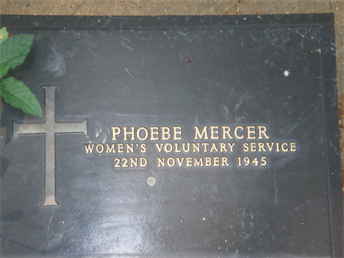
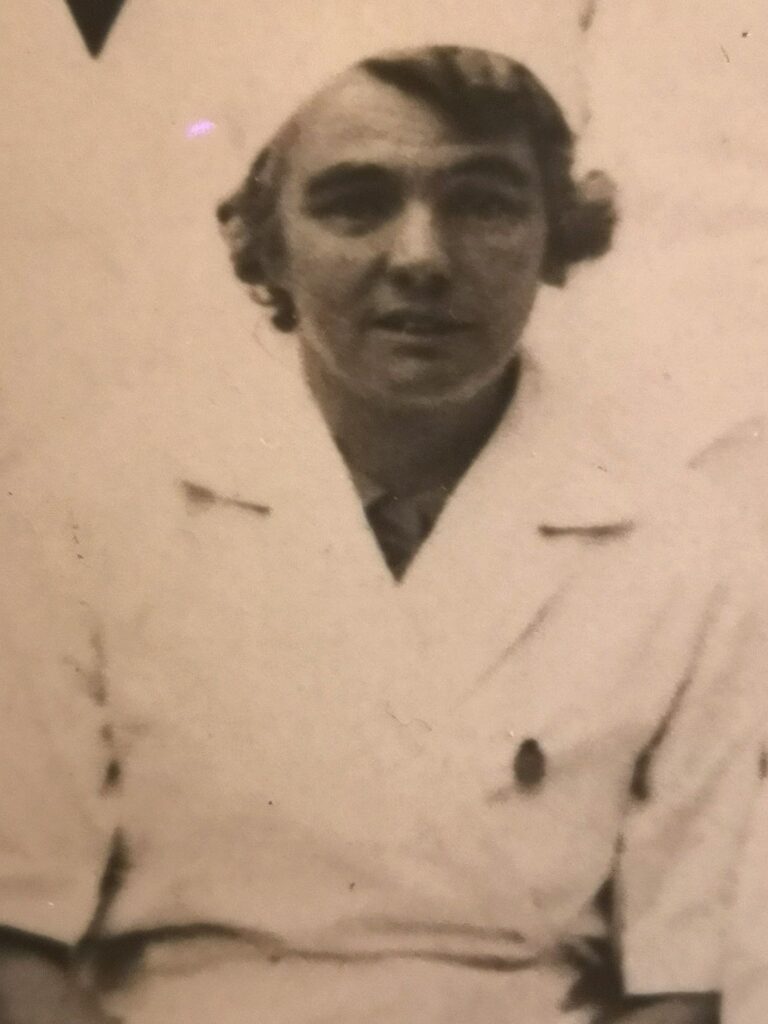
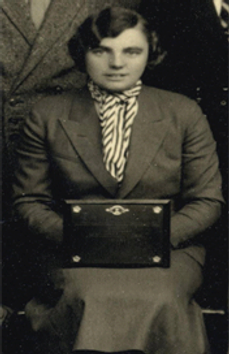
Pheobe Mercer was not a POW but she died in service to them.
In 1938 with the threat of a second world war looming, Phoebe joined the newly formed Women’s Voluntary Service in Blackburn England. In February 1945 she was asked to serve abroad. After some further training and with £25 of a clothing grant and extra clothing coupons, she was embarked for Assam in India close to the Burmese border.
Amongst this never stopping hive of activity Phoebe and her group of ladies, Misses Cotton, Palmer and Barton, with four British soldiers and thirty-one Indian staff set about making improvements to a canteen, which had been a match factory before the war. The canteen supplied hot and cold drinks, cakes, sandwiches, bacon, eggs, chips, and so on. After VJ Day in September 1945, they set about closing up the canteens and Phoebe was moved down to Bangkok where she was helping repatriate British service personnel and former prisoners of war.
On the 21 November, Phoebe was drowned in an accident; she was 42 years old (DOB 24 July 1903). Reports are vague some saying two military vehicles were involved and others saying little; some even suggest some nefarious quality to the accident. We have been unable to find her death certificate or her grave and it is possible that her body was never found. While we don’t know her resting place, her name is on the WVS Roll of Honour in Westminster Abbey, on the Roll of Honour at St Anne’s School and of course on our own War Memorial, so between these three places we will remember her.
[per correspondence with the Thai Chapter of the Royal British Legion, I am led to believe that there is credible evidence that the Kanchanaburi CWGC grave does indeed contain her mortal remains.]
https://www.findagrave.com/memorial/11841804/phoebe-mercer
[there is certainly more to this story. I will continue to search our any other citations of her life’s story.]
PM-ANC-profileHer name is listed on the WVS Roll of Honour, with her entry reading ‘accidentally drowned in Bangkok, Siam’.
In 2022 the organization of French military veterans held a ceremony to honor her memory. LEST WE FORGET.
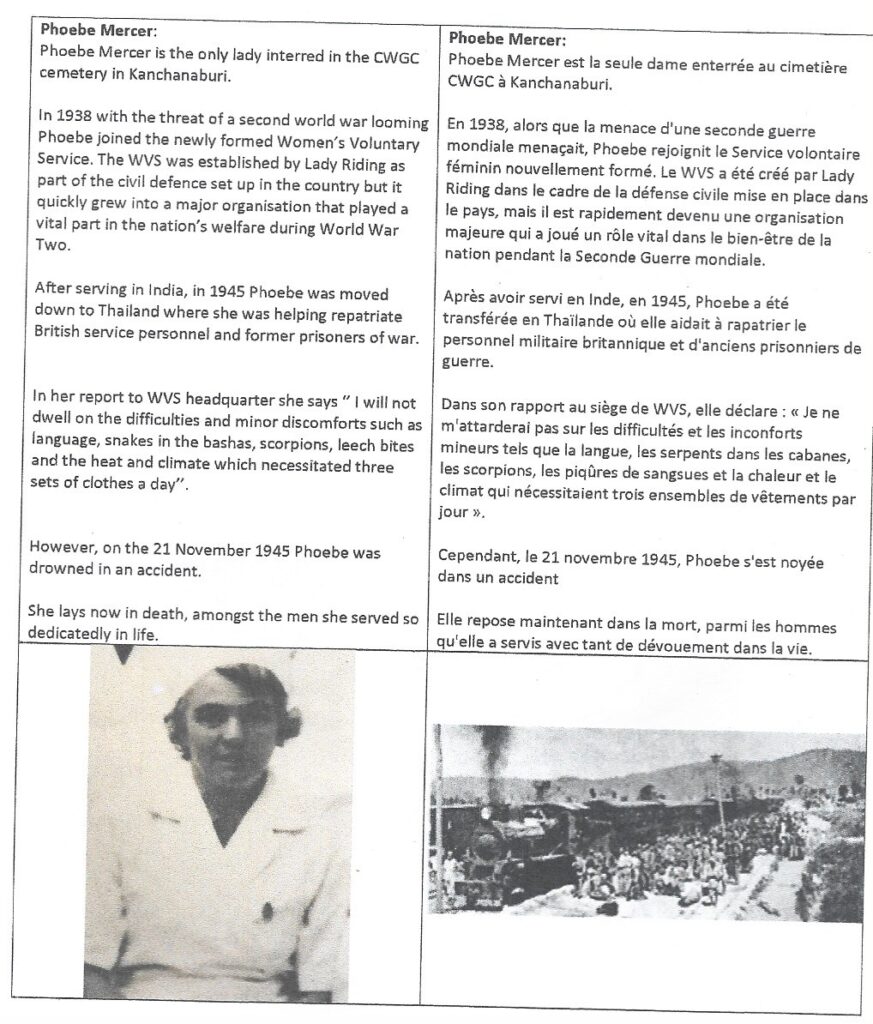
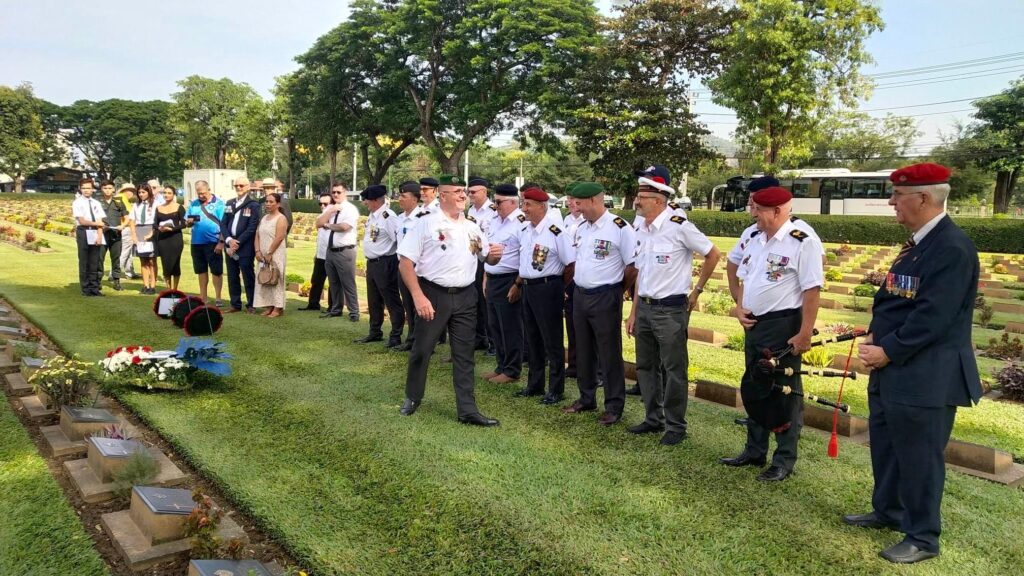
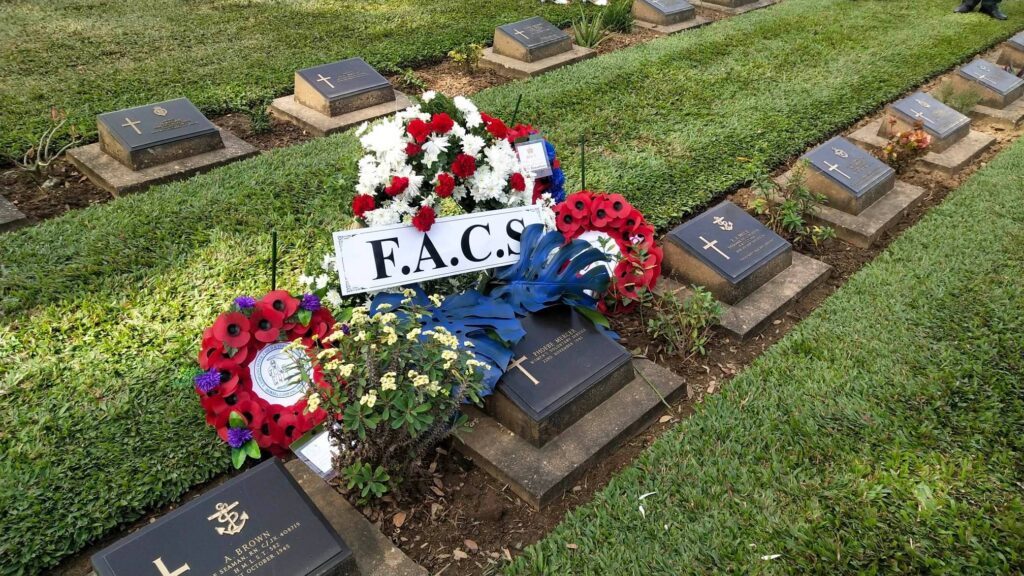
Upon request for a photo, I visited her grave site on 17 NOV 2021 and left a Royal British Legion poppy cross to honor her.
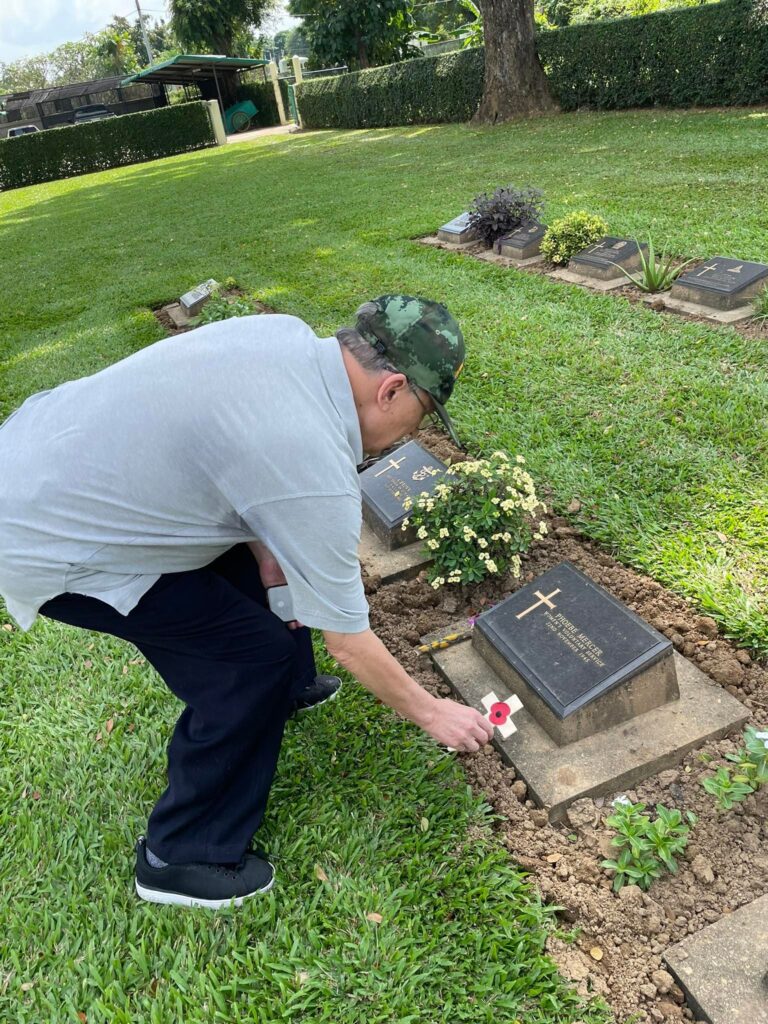
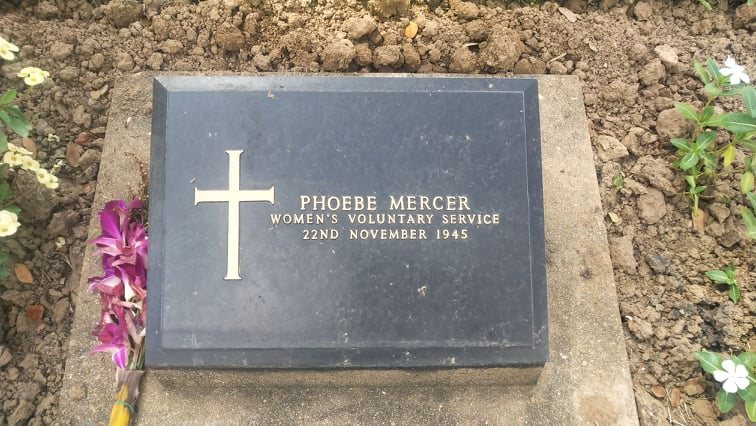
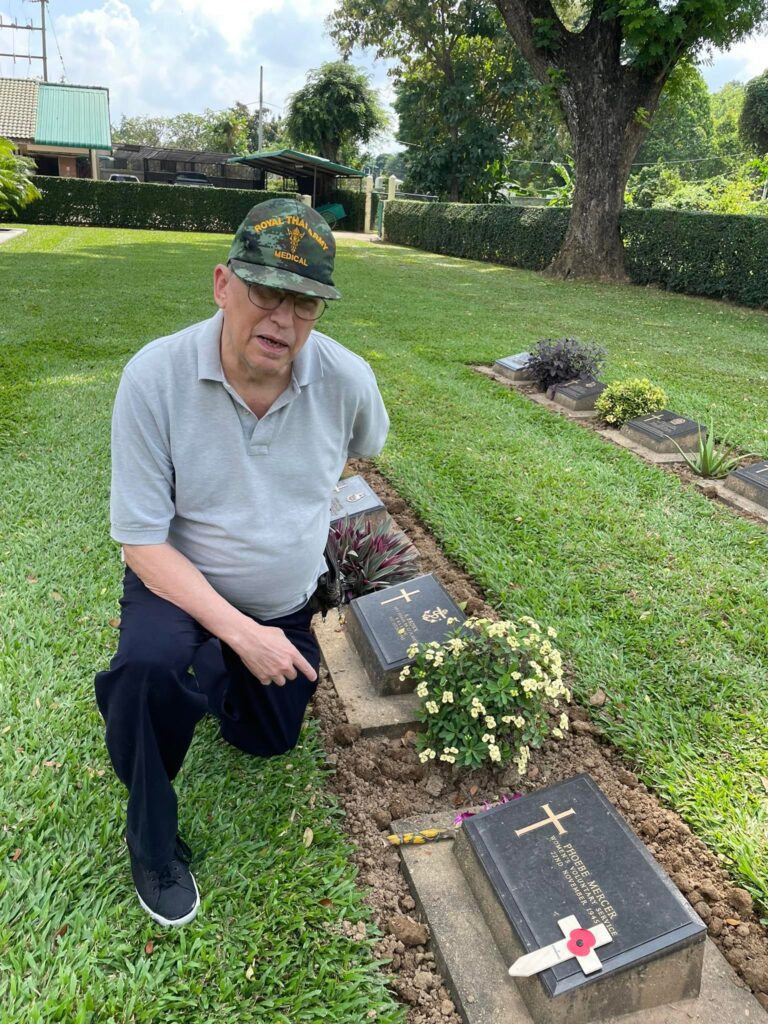
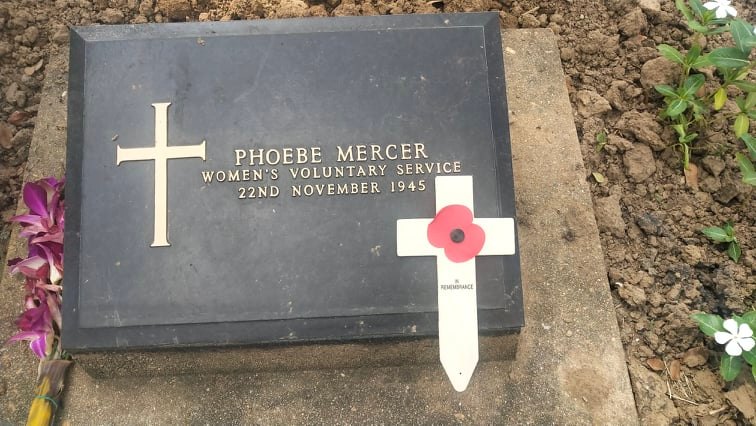
The spray of orchids to the let were quite fresh. So it seems that someone else had honored her recently.
The background story of the WVS:
https://en.wikipedia.org/wiki/Royal_Voluntary_Service
For completeness, we should also acknowledge that there is one female grave at the ChungKai cemetery. It is that of Agnes M. Mende who is reported to have died at the Nakorn Pathom hospital in APR 46 of an unlisted illness. She is thought to have been a clerk in the Bangkok offices of the Royal Netherlands Navy. She was 25yo, but little more is known about her. She is in grave X.E.8 near two other Dutchmen who were also 1946 deaths.

I knew there was only one female burried at the Kanchanaburi war grave. Today I have visited the museums and war graves. It was my honour to place flowers on Phoebe’s headstone. I thanked her and everyone for their service.
Please be more specific.